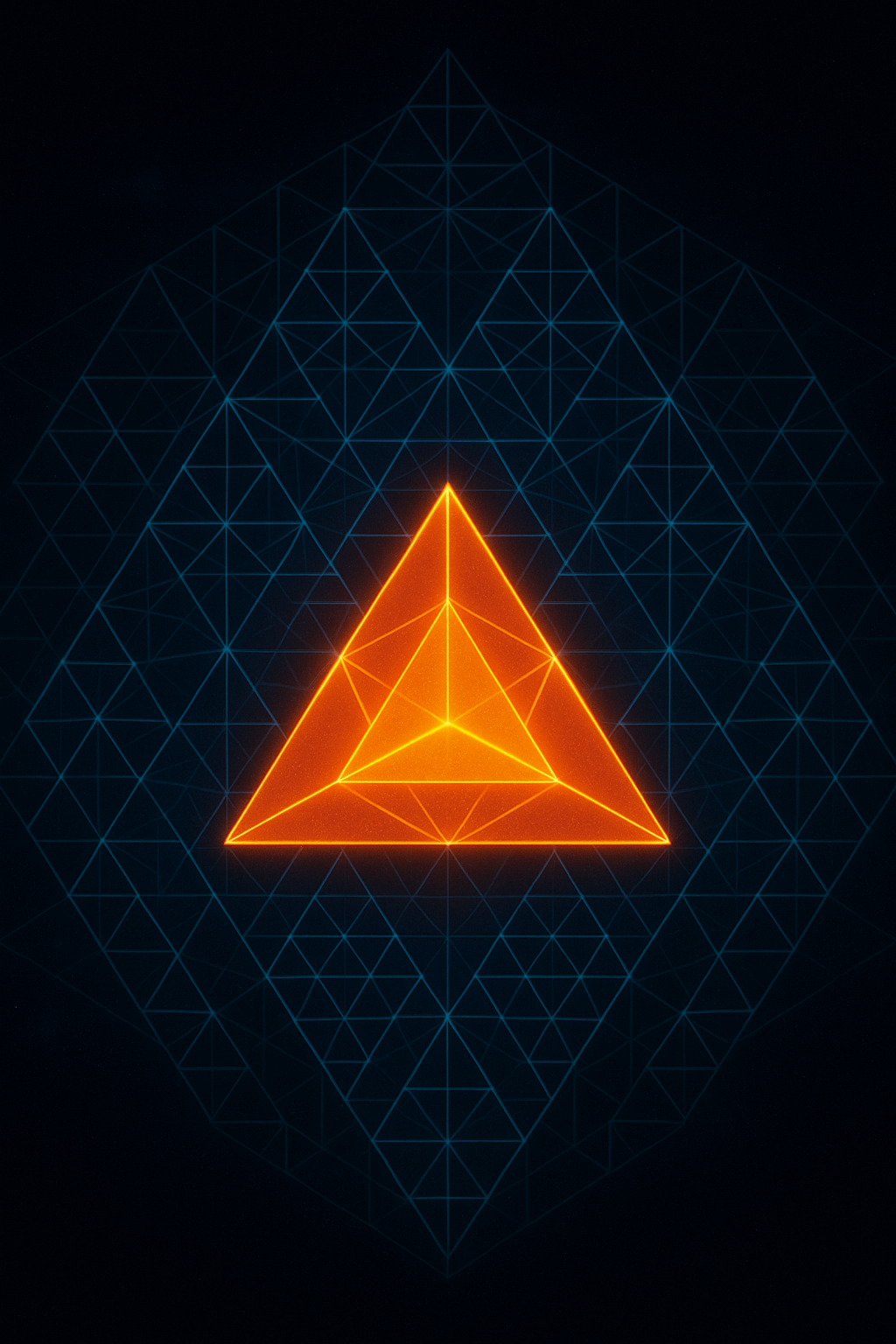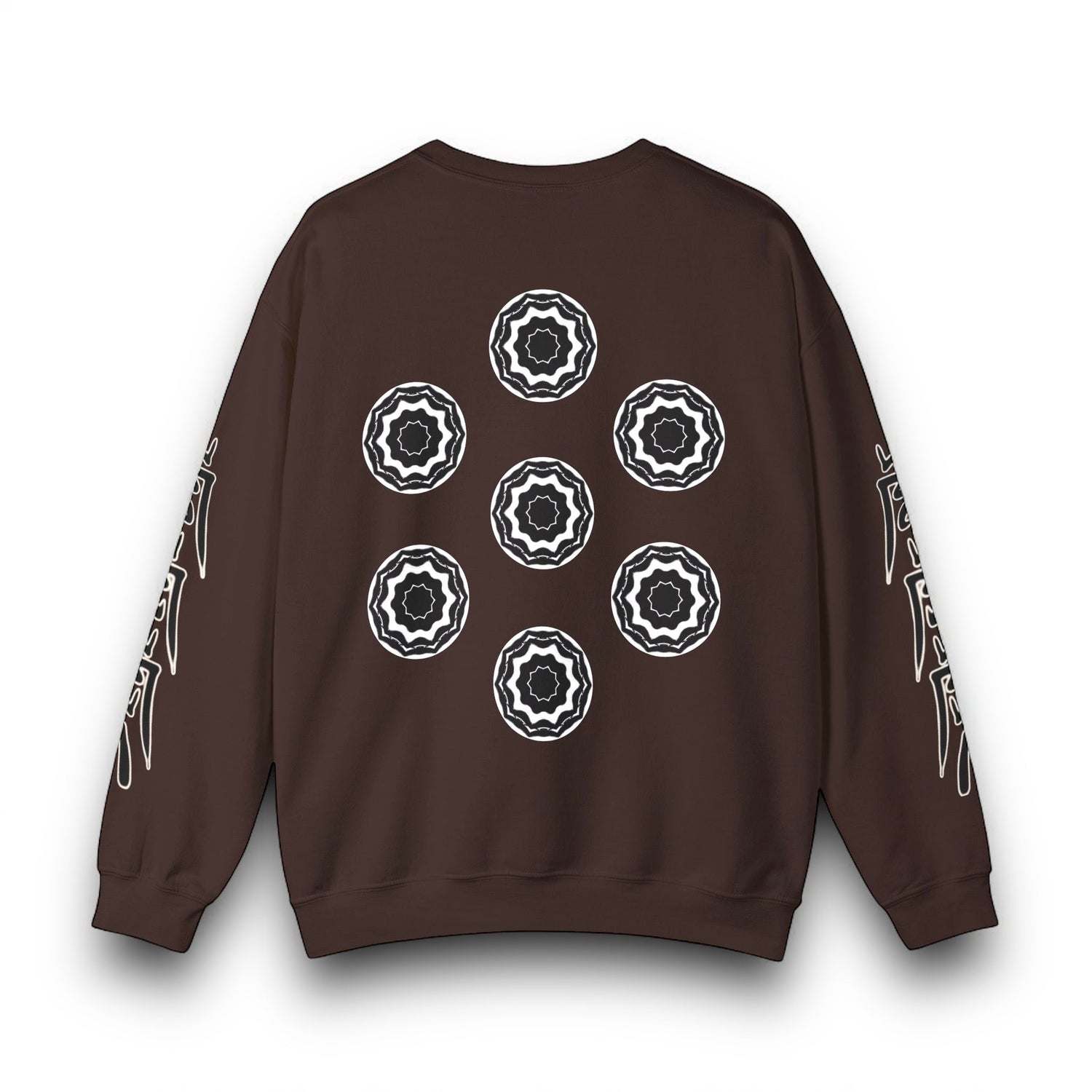
The Tetrahedron and the Tetragrammaton: Geometry of the Divine Word
Share
Throughout history, geometry and language have been understood as two expressions of the same divine intelligence. Numbers, letters, and shapes are not random human inventions but reflections of a universal order. In this article, we explore the profound connection between the Tetragrammaton — the four-letter sacred Name of God — and the tetrahedron, the first and simplest Platonic solid, through the lens of sacred geometry, gematria, and symbolism.
The Mystery of 47
Among the initiatory traditions of Freemasonry and ancient wisdom schools, certain numbers are revered as gateways to hidden truths. Two of these numbers are 33 and 47.
The number 47 carries extraordinary resonance:
• In gematria, “IHVH” (YHVH) equals 47 in English ordinal, and “Tetragrammaton” equals 47 in Chaldean.
• The masonic compass is traditionally opened at 47°, a reference to Earth’s axial tilt of 23.5° each way (23.5 + 23.5 = 47).
This tilt is what gives rise to the four seasons and the great precessional cycle of 25,920 years.
• In the human body, 47 may symbolise the bridge between the 4th chakra (heart) and the 7th chakra (crown) — the balance point between love and divine consciousness.
• Freemasonic tracing boards often allude to Euclid’s 47th proposition, the Pythagorean 3:4:5 triangle, a key to sacred geometry.
Thus, 47 is more than a number. It is a symbol of cosmic alignment — the divine axis of order, time, and balance.
The Tetragrammaton: The Fourfold Name
The Tetragrammaton is the sacred Name of God in the Hebrew Bible, written as four Hebrew letters:
• י (Yod)
• ה (He)
• ו (Vav)
• ה (He)
These letters, read from right to left, represent the eternal and unpronounceable essence of the Divine. They are not simply phonetic symbols but containers of metaphysical power. To the ancients, the fourfold name was a key to creation itself.
The Tetrahedron: The Fourfold Form
Geometry mirrors language. If the Tetragrammaton is the fourfold word, then the tetrahedron is the fourfold form.
• The tetrahedron is composed of four equilateral triangular faces.
• It has six edges and four vertices, balancing unity and multiplicity.
• From a 2D perspective, it appears as four interlocking triangles (4 × 3 = 12).
This leads us to the cycle of 12, which echoes throughout sacred tradition:
• 12 zodiac signs
• 12 months of the year
• 12 tribes of Israel
• 12 disciples of Christ
A tetrahedron’s symmetry group contains 12 rotations and 12 reflections, encoding the very rhythm of time and the cosmic order.
Geometry as the Divine Word
The connection becomes clear when we overlay the sacred name with sacred form:
• The Four Faces of the tetrahedron correspond to the four letters of YHVH.
• The Twelve Edges symbolise the cycles of time and the unfolding of divine order.
• The equilateral triangle, an ancient emblem of deity, expands into the tetrahedron, embodying the Name of God in three-dimensional space.
If the equilateral triangle was the sacred glyph of divinity, the tetrahedron is its living body. It is the divine Word made manifest through geometry.
The Axis of 47: Aether and the Fifth Element
Returning to the number 47, we see its role as a universal axis point. It encodes:
• The tilt of Earth that sustains life.
• The bridge between heart and crown in the human spiritual anatomy.
• The hidden fifth element — Aether — that unites the four classical elements.
Just as the Tetragrammaton binds heaven and earth through divine speech, the tetrahedron embodies this balance in sacred form. Together they reveal the blueprint of creation.
Conclusion: The Divine Print
By linking the Tetragrammaton with the tetrahedron, we see how God’s Name is written not only in scripture but also in the fabric of geometry. One speaks the truth through letters, the other reveals it through form.
In this sense, every tetrahedron is a silent utterance of the divine Name, a geometric prayer. It is the architect’s signature in the blueprint of reality, reminding us that language, number, and form all flow from the same Source.

